up:: [[Intermediate packets]]
In the last part of our Intermediate Packet (IP) series, we talked about why most people disobey the ancient laws of effective IP creation and the rules you need to follow to utilize IPs. Now I will delve into the fourth and most crucial rule of IP creation: progressive summarization.
Progressive summarization (PS) is the art of bolding, highlighting, and summarizing information for your future self. It's like time travel. No, not the Dr. Who blue box time travel; I'm talking the real stuff.
While progressively summarizing, we have to imagine how our future selves will see an IP days, weeks, months, or even years down the line. Then we summarize the IP to become actionable.
Why is this necessary?
Humans are susceptible to the way information is presented. Our eyes gravitate toward anything which sticks out.
By highlighting and bolding essential parts of an IP, our future selves can get a rough idea of what it is in a _short_ time.
And your future self is lazy.
If an IP isn't easily actionable, they will likely let it fall through the cracks. Hours of time and energy; wasted.
The purpose of PS is to make IPs as actionable as possible down the line. This might include summarizing how an IP could be used for a future project, describing what a specific IP is, titling it with its most common use case, or many other things.
But mostly, I use it to summarize nut butter reviews to make sure I only let the most quality nut butter enter my mouth.
What? We all have our quirks.
PS works in five steps:
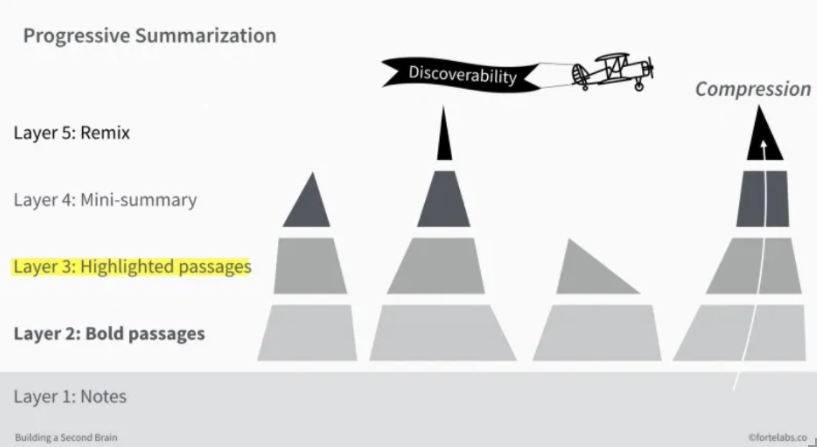
For simplicity, I'll follow PS on an article called _Supersizing the Mind: The Science of Cognitive Extension._ But this process can work for practically any IP you have. You could do this with an email, podcast transcript, video transcript, or any other piece of IP.
Layer 0: Layer 0 is the original text before going through the highlighting and annotating stages.
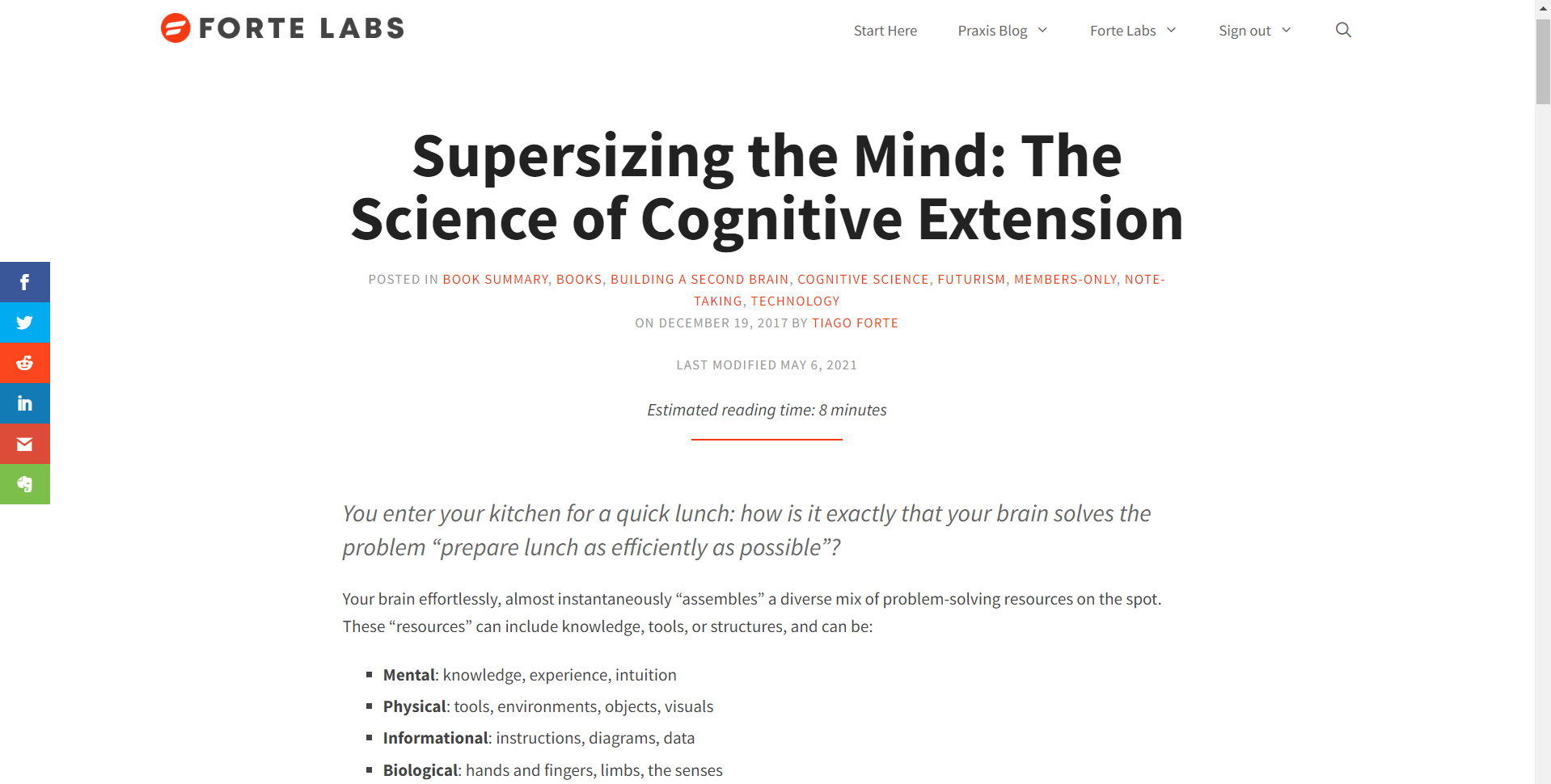
Layer 1: Layer 1 involves highlighting and annotating the parts of a text which resonate with you the most. Check out my blog post on [How I Highlight and Annotate While Reading](https://www.aidanhelfant.com/how-i-highlight-and-annotate-while-reading/) to learn about how to do this more in-depth.
The most critical points from the article are to highlight what resonates with you and distill it with a project in mind. What might you use this IP for? What have you used this type of IP for in the past?
This first layering took me around 10 minutes.
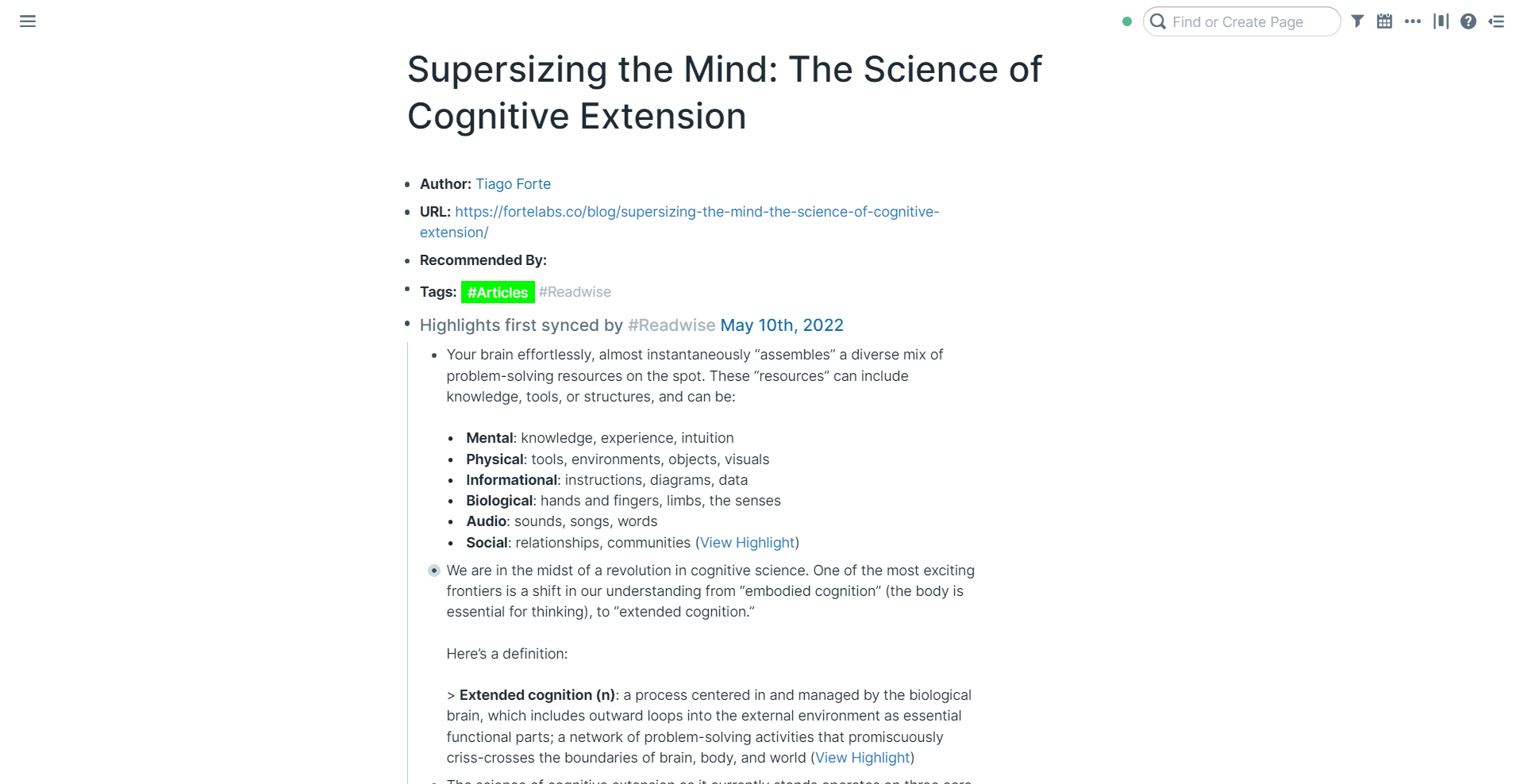
The next part is essential. Let the IP—annotated article notes in this case—sit. We want to let the ideas have time to foster and grow in our minds.
When do you move to the next layer? Follow the touch rule: touch an IP for any reason, and you have to summarize it in some way. This could be moving to the next layer of PS or making one small edit. It could also be adding the IP to your resources for a project you're currently working on. Usually, this takes around a week to two months.
But you might never move to the next step; this is okay. Not all IPs or notes should be summarized. Most IPs are not worth your time. Many won't be easily reusable or aren't relevant to the stage of life you find yourself in. The purpose of PS is to put IPs that are useful into an easily actionable state, not to summarize IPs you will never use.
Layer 2: I formed layer two by going through and bolding the parts of the highlights which resonated with me most. I have an app called Readwise that syncs the highlights I make with my notetaking app of choice, Roam Research, but you don't need these two apps to summarize your IPs. I highlight first because Roam Researches code is unique to other apps making highlighting first work better, but you will probably bold. When you do this yourself, make sure not to get stuck on a piece of text while moving through. Our analytical mind will only slow us down. Instead, take some wisdom from Nemo and "just keep swimming" or moving to the next highlight in your case.
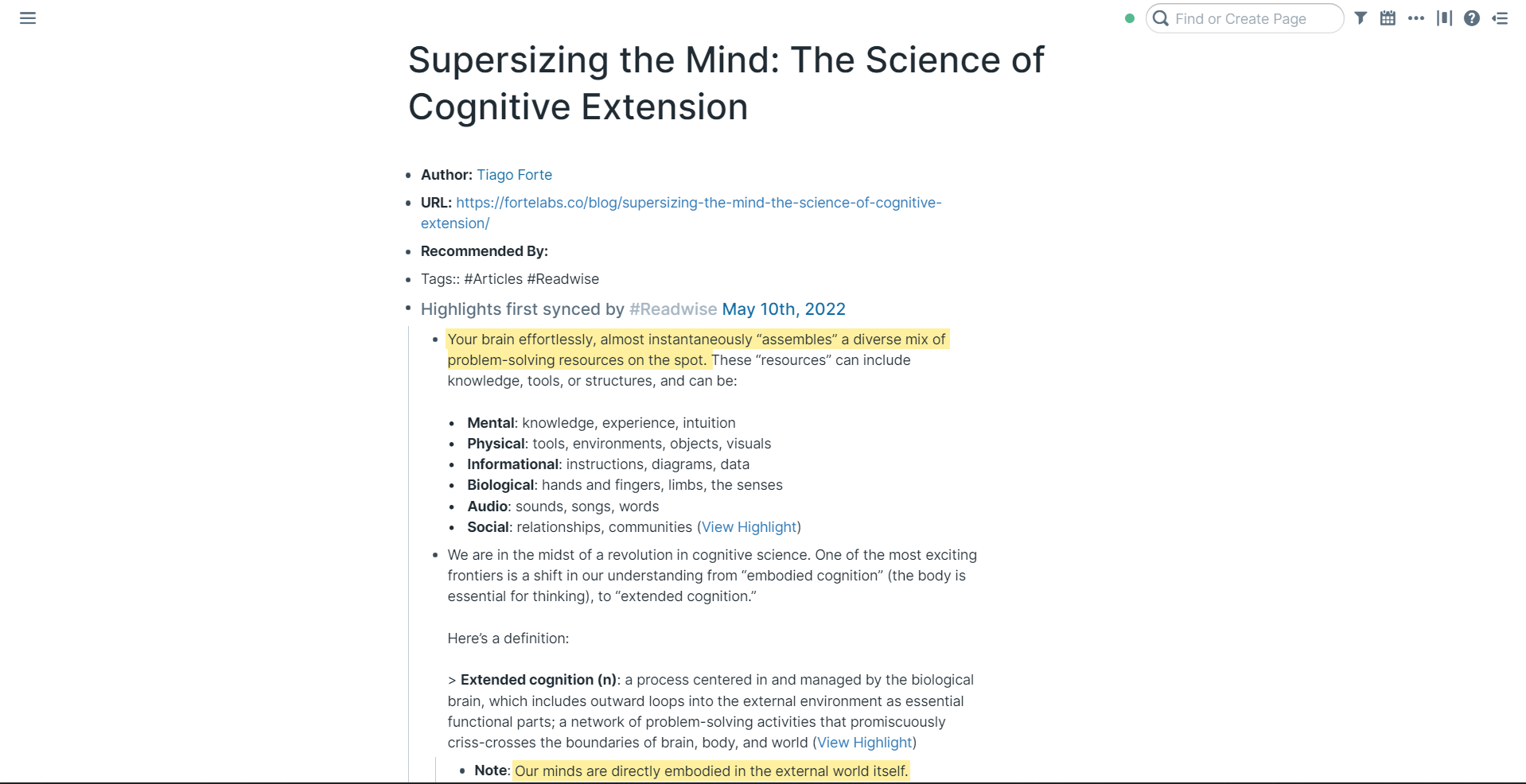
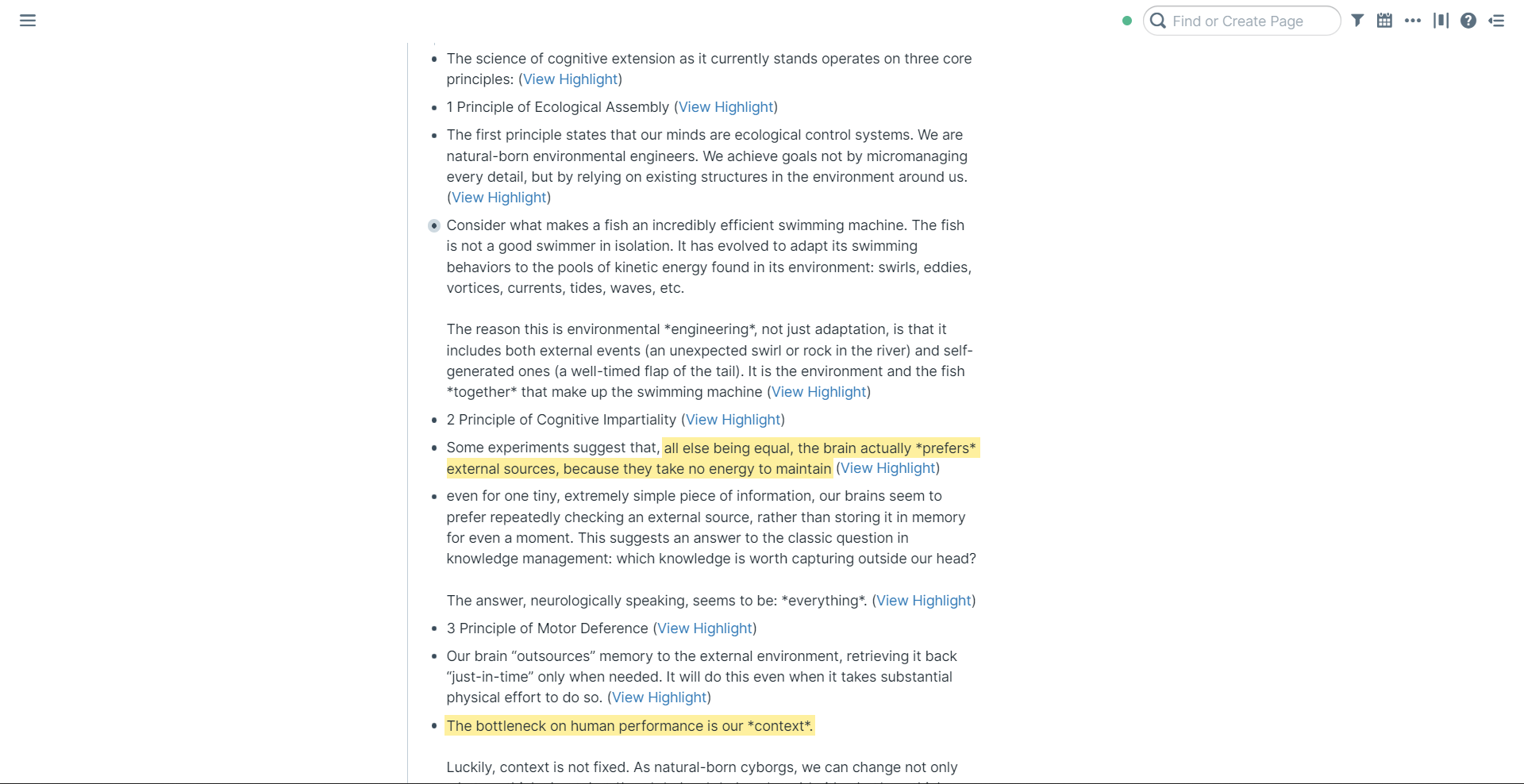
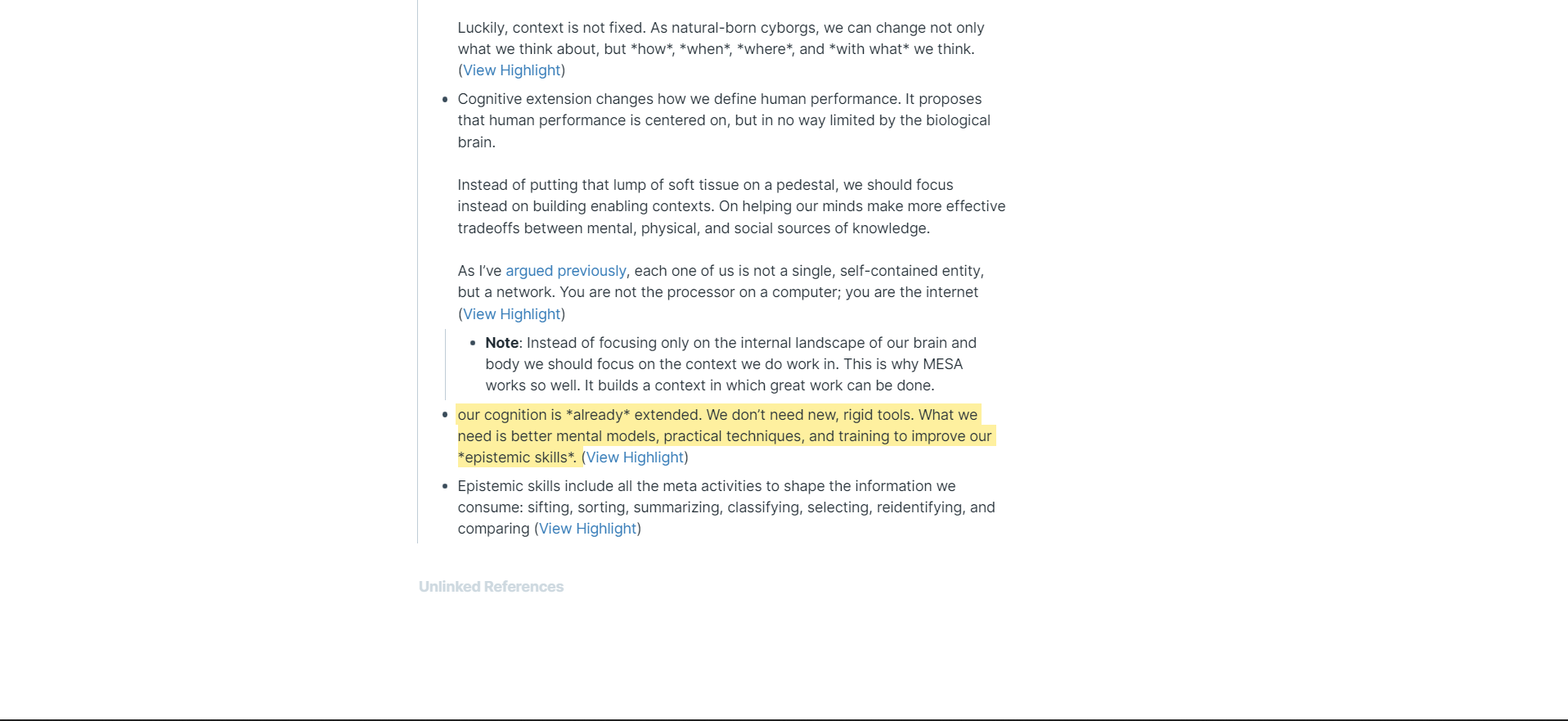
This took me around 1 minute. Let that sink in. In the future, I can get the gist of the article by glancing over the highlights rather than reading for five minutes.
Layer 3: Layer 3 involves going through and highlighting parts of the bolded text. For Roam Research I will be bolding layer 3 because of the unique code. Use the same highlighting and annotation rules mentioned before.
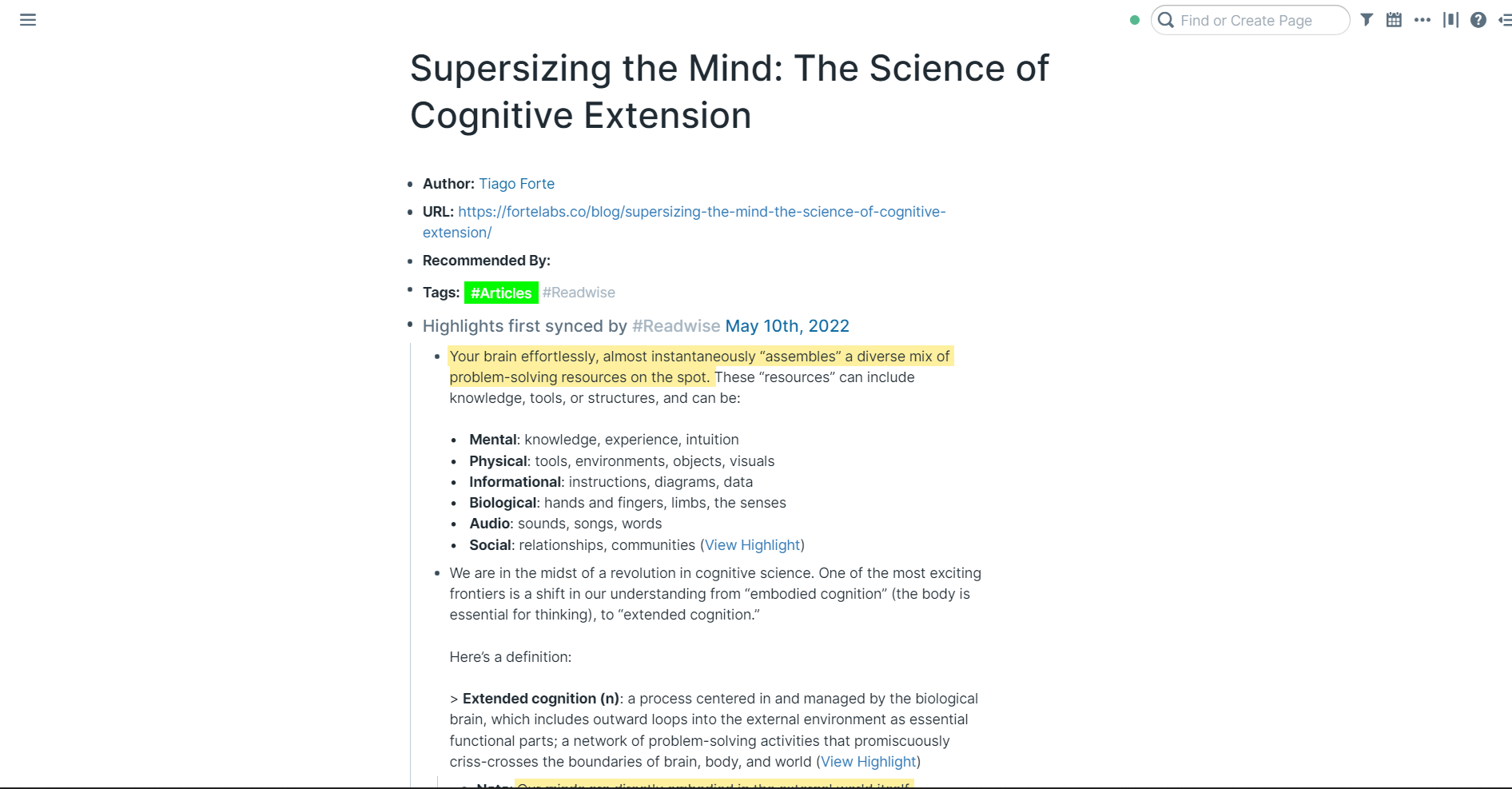
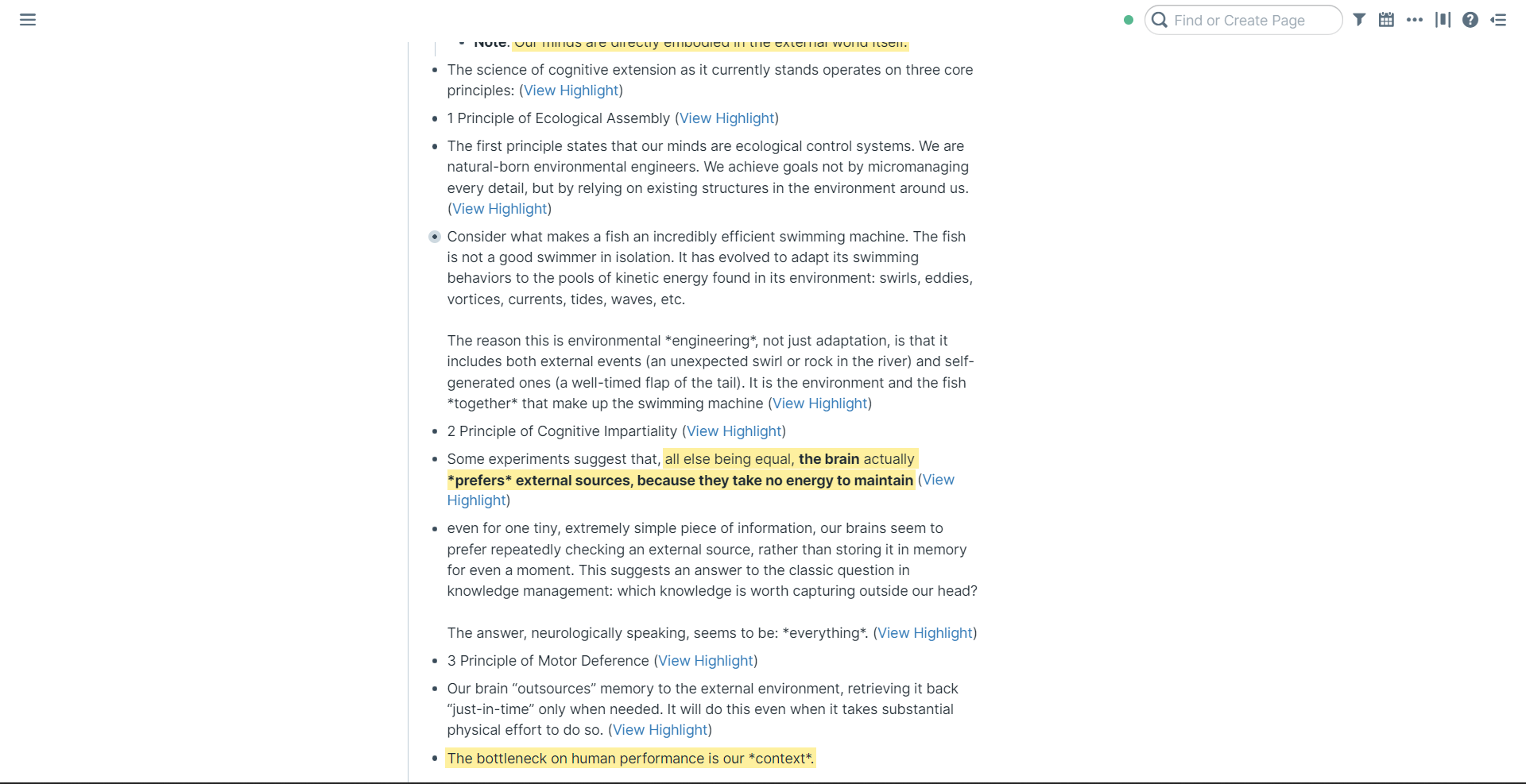
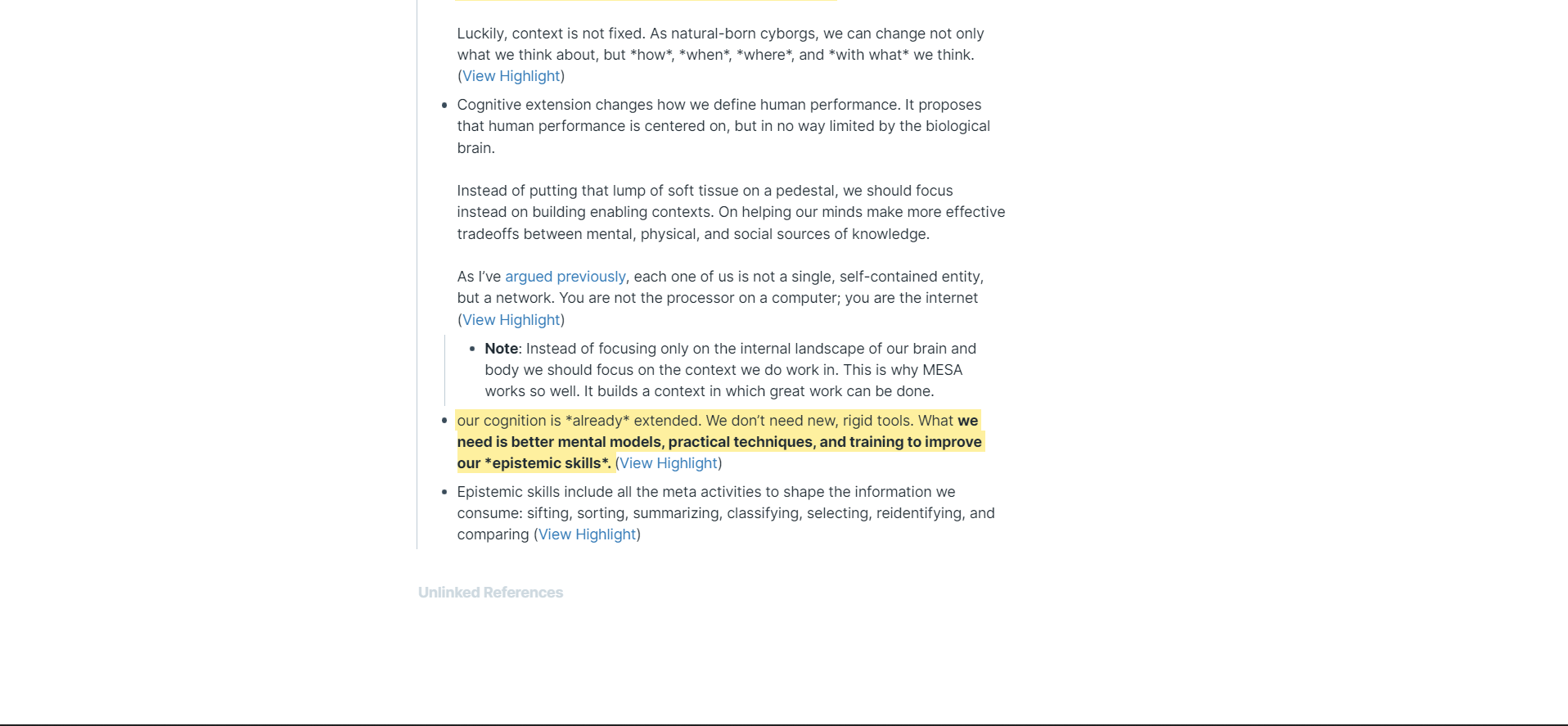
This process took me 15 seconds. Of course, some notes will take longer but every progressive summarization layering will be faster than the last.
Layer 4: Finally, layer 4 involves summarizing the key points of information at the top of the text. Usually, I write three sentences but it changes based on how large the IP is.
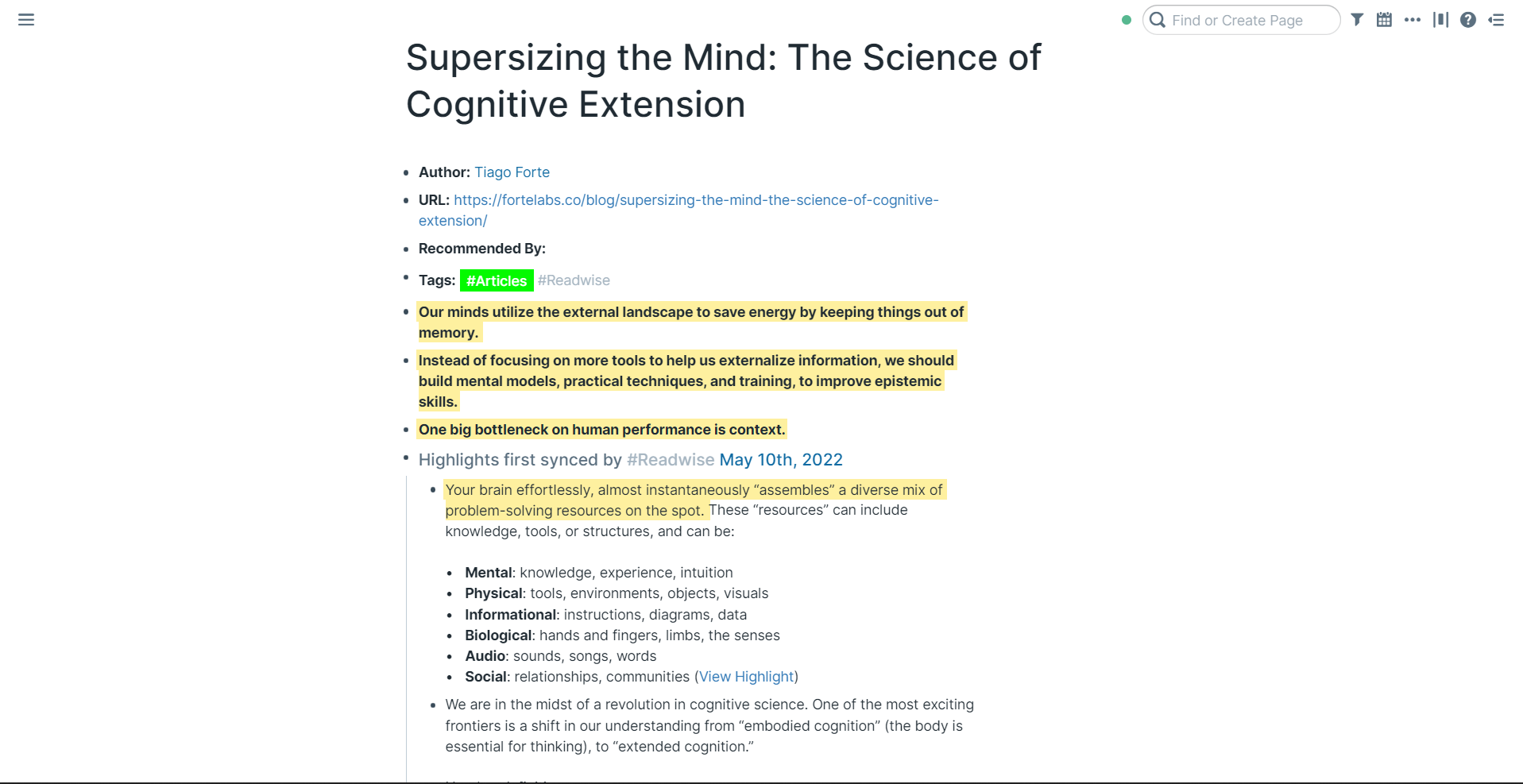
Layer 5: Layer 5 is the remixing step. This involves taking the IP and assembling it into something either independently or with a collection of other IPs. You could make a video, blog post, podcast episode, anything. You don't have to wait until a note is at layer 5—most notes I use for creation are at layer 3 or below. Of course, not all IPs will be used to create something. In this case, you still have a fully summarized IP which will be easily actionable in the future.
Most IPs won't make it to level 5. Don't summarize every IP to the same degree. The more unfamiliar you are with an IP, the more you need to summarize it for your future self. This whole process may seem needlessly longwinded. It will seem painful and pointless at first. Once you find yourself 50 times as productive, you will thank your past self.
But PS isn't meant to be complicated. You should make it virtually frictionless by finding ways to be lazy about distillation. As mentioned before, follow the touch rule: only move to the next step of progressive summarization if you touch an IP. And don't feel you have to make large changes.
Your edit could be as easy as changing the title of the IP; even this can be incredibly helpful. Which do you think I will be more likely to find use in: "Meeting Notes 5/1/2022" or Meeting Notes 5/1/2022 (Firing Jim because he sucks)."
Progressives summarization holds your IP system together. It creates actionability while at the same time being easy to implement in the long term. And it makes your IPs worth ten times more as you can seamlessly integrate them into projects.
Throughout this blog post series on IPs, you have learned how to make your past self work for you, but some essential questions have still been left unanswered.
What systems and apps should we use to store and organize information which resonates with us over time? How do we sift through the incredible amount of information on the internet?
In other words, how do we build a second brain?
Check out [[The Ultimate Beginners Guide to Building a Second Brain]] to learn how.